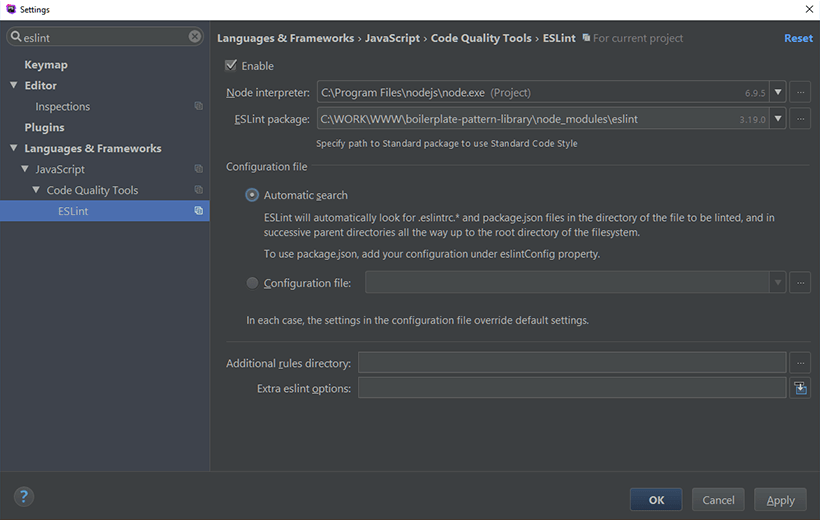Phpstorm Eslint
In PhpStorm, open the settings and search for eslint to find an ESLint section. Click to Enable this and hit Ok. Yep, PhpStorm will now instantly tell us when we've written code that violates our rules. Check this out: open assets/js/replog.js: this is the file that runs our existing LiftStuff frontend. But before we do, I'm going to open my PhpStorm settings and search for ESLint. Make sure 'Automatic ESLint configuration' is selected. I've already added a.eslintrc config file to the app. ESLint enforces JavaScript coding standards and PhpStorm can automatically read this and highlight our code when we mess.
Since PhpStorm 2020.2, JSLint support in the IDE has been deprecated.
However, JSLint support is still available through the JSLint plugin, which can be installed on the Settings/Preferences | Plugins page as described in Installing plugins from JetBrains repository.
Note that JSLint does not fully support some latest ECMAScript features, see the JSLint official website for details.

When JSLint support is enabled, PhpStorm highlights errors that JSLint detects, provides descriptions for them, and suggests quick-fixes where possible.
Phpstorm Eslint Airbnb
Descriptions of the errors detected in the current file and quick-fixes for them are available from the editor and from the Current File tab of the Problems tool window.
Errors in all previously opened files and quick-fixes for them are shown in the Project Errors tab of the Problems tool window. To open the tool window, click the Inspection widget in the upper-right corner of the editor:
Phpstorm Eslint Not Working
See View problems and apply quick-fixes in the editor and Problems tool window for details.
Before you start
Mac os yosemite upgrade to high sierra. Install and enable the JSLint plugin on the Settings/Preferences | Plugins page as described in Installing plugins from JetBrains repository.
Enable JSLint and configure its behavior in PhpStorm
Phpstorm Eslint
In the Settings/Preferences dialog Ctrl+Alt+S, go to Languages and Frameworks | JavaScript | Code Quality Tools | JSLint, and select the Enable checkbox. After that the other controls on the page become available.
By default, the tool reports detected problems of all types. To skip problems of a certain type, select the checkbox next to this type in the Tolerate area.
Learn more about JSLint options from the JSLint official website.
In the Assume area, specify the targeted environment to check the code against.
In the Globals field, specify the predefined global variables. Type their names or use
predefobject keys.To verify .json files as well, select the JSON checkbox In the Validate also area.
